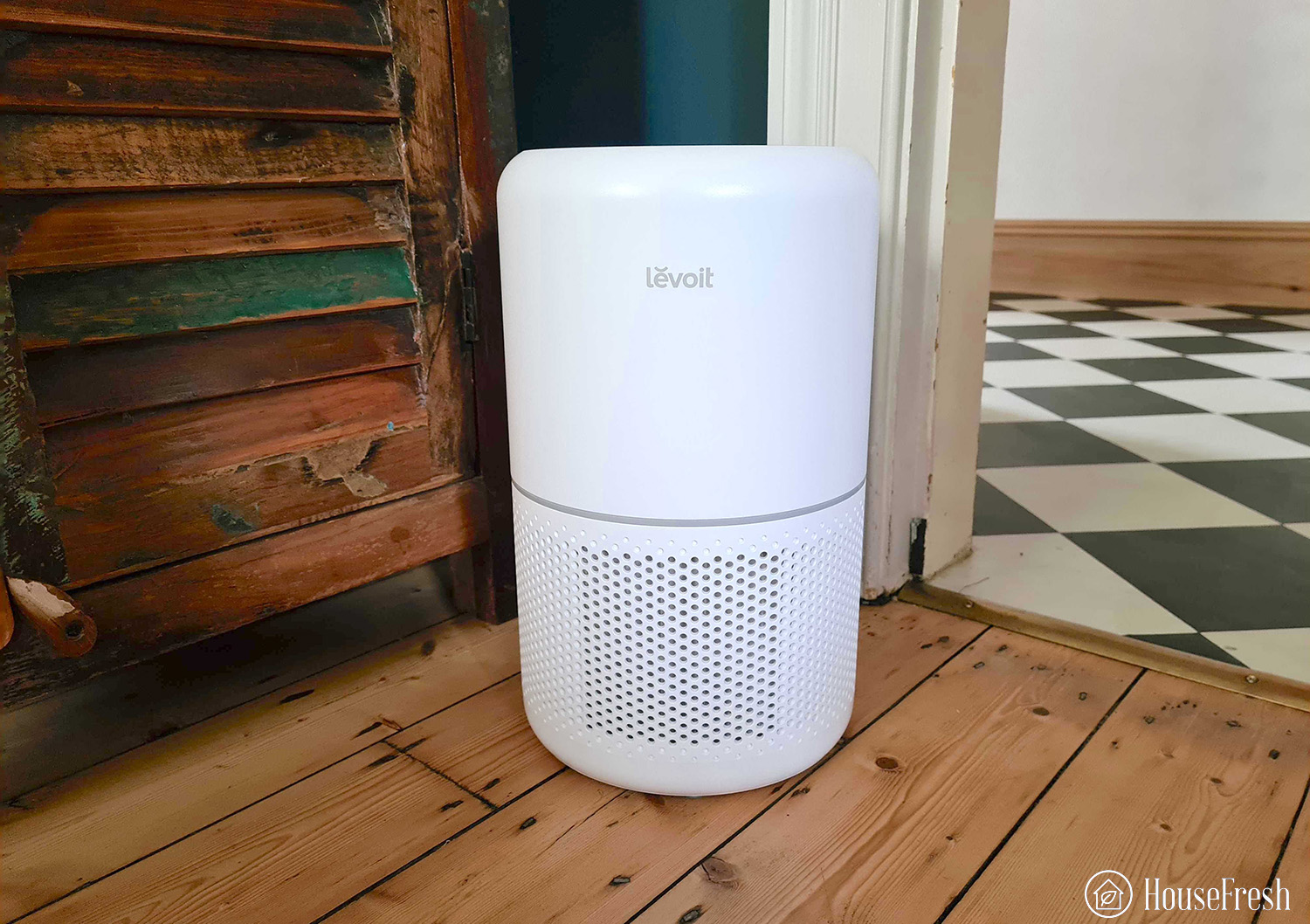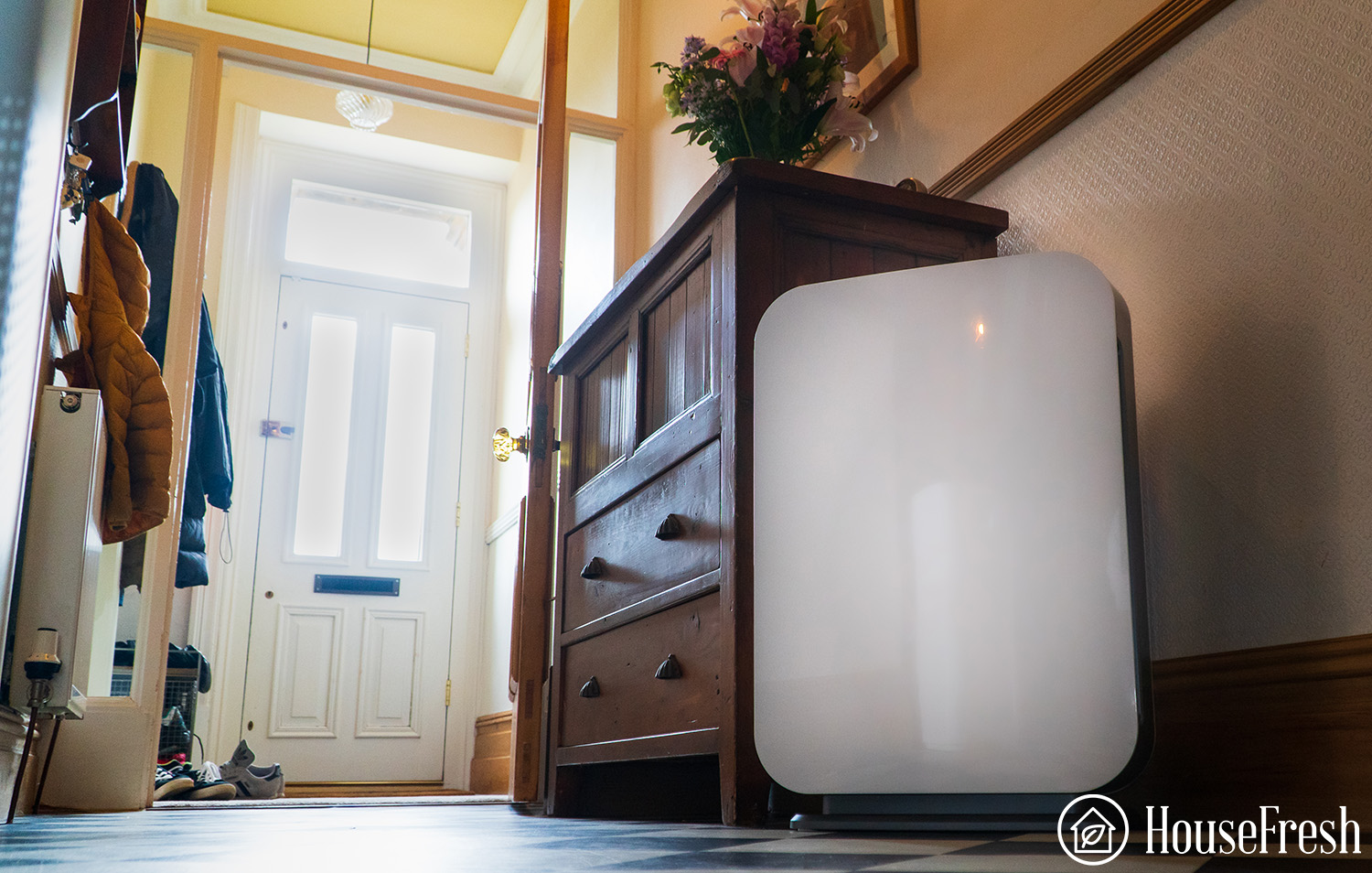Breathing in secondhand smoke puts your health at serious risk, but if you live with a smoker avoiding it can feel like a near-impossible task. Fortunately, you can take various step, and we’ll be delving into all that in this article.
We’ll examine why secondhand smoke can be so dangerous, particularly for children.
Plus, you’ll find helpful tips on how to avoid smoke. And if you’re a smoker yourself, check out our section on how to protect those around you.
Be sure to read our advice about the effectiveness of air purifiers and our recommendations for the best devices.
Tips to minimize secondhand smoke when living with a smoker
1. Ask smokers not to light up around you
This may be tricky as it can feel awkward (and even intimidating) to ask someone you live with not to smoke.
But asking gently can persuade them.
Try one of these variations:
🗣️ “I get headaches from the smoke fumes wafting to my work studio. Would you mind not smoking indoors?”
🗣️ “The smoke makes me cough a lot at night and impacts my sleep. I’d be really grateful if you smoked outside.”
🗣️ “I want to improve my health and fitness and find it difficult to do that when you smoke. Could you do it in the garden/yard?”
2. Be aware of secondhand smoke on clothes
Tobacco smoke can stick to indoor surfaces, yet it can also attach itself to clothing. Even if someone you live with smokes inside the home while you’re not there, the smoke could still stick to your clothes.
Be sure to wash your clothes and linens regularly to eliminate the settled smoke and odors. If your clothes continue to smell, hang them outside if possible, as this can help eradicate the smell.
While smoking outside is a much better option, if the person you live with does so, they can bring smoke indoors via their clothes.
For situations like this, try asking the smoker if they could wear a protective layer, like a sweatshirt or coat. Then once they’ve finished smoking, ask them to change out of the smoky sweatshirt.
3. Encourage loved ones to stop smoking
If the smoker in your life quits, this will immediately benefit everyone. However, stopping smoking isn’t easy.
👉 Help them choose a date to quit when stress levels are low — it can be harder to give up if they’re just starting a new job or are working on a big project.
👉 Aim to do things that will help keep their mind off smoking, such as taking a walk or bike ride together, as this can help them get past their cravings.
👉 Promote a healthy diet with fresh fruit and vegetables; for example, fresh, sliced carrots in the refrigerator can help when they want that nicotine fix.
👉 Remove anything that reminds them of smoking, such as ashtrays and lighters.
4. Get an air purifier
Opening windows and doors helps with ventilation, yet using an air purifier will significantly improve your air. This is because they draw in polluted air and clean it before pushing sanitized air back into your room.
Pay particular attention to the filters. For example, a HEPA (High-Efficiency Particulate Air) filter can trap tiny airborne particles like smoke, while an activated carbon filter is highly effective for removing odors.
Best 3 air purifiers for cigarette smoke
We’ve tested hundreds of air purifiers at HouseFresh, including devices for weed smoke, cigarette smoke and the best budget models.
Here’s our pick of the top three units for removing smoke:
| 👑 BEST OVERALL | 💰 FOR TIGHT BUDGETS | 🛋️ FOR LARGE SPACES | |
|---|---|---|---|
| Blueair Blue Pure 211+ | Levoit Core 300 | Alen Breathsmart 75i | |
 |  |  | |
| AIR CLEANING SPEED ⚡ | 18 minutes | 40 minutes | 24 minutes |
| CADR 👩🔬 | 350 CFM / 594 m³/h | 145 CFM / 244 m³/h | 347 CFM / 589 m³/h |
| FILTER TECHNOLOGY 💨 | HEPASilent™ technology and Activated Charcoal | Pre-filter, H13 HEPA and Activated Carbon Pellets | Pre-filter, H13 True HEPA and Activated Carbon Pellets (B4-Fresh option) |
| MAX ROOM SIZE 📏 | up to 540 sq. ft. | up to up to 219 sq. ft. | up to 1,300 sq. ft. |
| WEIGHT ⚖️ | 14.1 lbs (6.4 kg) | 7.48 lbs (3.4 kg) | 27 lbs (12.2 kg) |
| OUR REVIEW 🔍 | Blueair Blue Pure 211+ review | Levoit Core 300 review | Alen 75i review |
| PRICE 💵 | $219.99 | Price not available | $748.99 |
Last update on 2024-04-26 / Affiliate links / Images from Amazon Product Advertising API
How to protect others if you’re a smoker
If you’re a smoker and want to help protect the people (and let’s not forget pets) around you, then follow these steps.
- Stop smoking as soon as possible — This is the best and quickest way to prevent others from breathing in your secondhand smoke.
- Never smoke indoors — The cold and rain can make it difficult, but always going outside is crucial. Keep an umbrella by the door if you need encouragement.
- Let visitors or people who work for you know that your home is smoke-free — You could make a sign that politely informs people your home is a smoke-free environment. For example, “Thank you for not smoking”.
- Remove ashtrays and cigarette butts — Ensure there is nothing children or pets can access.
- Clean and steam your carpets — This will help to remove the smell of smoke and toxic particles. Don’t forget about rugs and drapes, too.
- Keep your car smoke-free — This is a must if you transport children. Aim to time smoking when you know children won’t be in the car. If it’s in the morning and there’s a designated smoking area at your workplace, hold off smoking until you arrive.
- Eliminate triggers in your car — Put spare change in the ashtray as you’ll be less tempted to fill it with ash and keep cigarettes in the trunk. You could also leave a cell phone charger in the adaptor outlet so you won’t be able to use it as a lighter.
The dangers of secondhand smoke
The simple truth is that people who breathe in secondhand smoke face the same health risks as smokers. According to the Centers for Disease Control and Prevention (CDC), there is no safe exposure level and even a tiny amount can cause serious health problems.
Even brief exposure to secondhand smoke can cause short-term effects, such as coughing, headaches, sore throat and eye and nose irritation. Secondhand smoke is dangerous, especially for pregnant women, babies and young children.
There is an increased risk of complications for pregnant women during and after birth.
This is because tobacco contains over 7,000 chemicals, and around 70 are believed to cause cancer.
📖 According to the American Lung Association, secondhand smoke leads to more than 41,000 deaths per year, and lung cancer is one of the prime causes.
📖 A report published in the International Journal of Health Sciences found that non-smokers exposed to smoke have an increased risk of developing lung cancer by 20-30%. If you’re a lung cancer patient, exposure to secondhand smoke can reduce your chance of survival.
📖 It’s also believed that secondhand smoke can increase the risk of other cancers, including breast and throat, according to the American Cancer Society. Similarly, people who are exposed to it are at greater risk of developing heart disease and stroke and suffering a heart attack.
📖 According to the CDC, babies are likelier to have a low birth rate if their mothers are exposed to secondhand smoke. Similarly, lung infections can develop in babies who breathe in secondhand smoke. Children’s lungs are still growing and breathing faster, so they’re particularly vulnerable to the dangers. Very young infants are at risk of sudden infant death syndrome (SIDS). And children with asthma are prone to suffer from attacks that are both more severe and more frequent in nature.
📖 According to the American Cancer Society, they’re also increasingly likely to develop bronchitis, become ill more often and experience ear infections.
Final thoughts
Secondhand smoke is a significant health concern and is just as dangerous as smoking. It is possible, however, to avoid breathing it in if you’re around people who smoke.
While it might feel uncomfortable, asking them not to smoke near you or to do it outside is paramount. And remember that if you’re a smoker yourself, quitting is the best way to protect everyone’s health.
Be sure to consider buying a high-quality air purifier, too, as this will significantly help to eliminate toxic smoke particles.
SOURCES
- American Cancer Society. (2020). How to Help Someone Quit Smoking. cancer.org
- American Cancer Society. (2023). Health Risks of Secondhand Smoke. cancer.org
- American Lung Association. (2022). Health Effects of Secondhand Smoke. lung.org
- Allen, P. (2023). HouseFresh. 8 Best Air Purifiers for Weed Smoke. housefresh.com
- Ashton, D. (2023). HouseFresh. 9 Best Air Purifiers for Cigarette Smoke. housefresh.com
- Ashton, D. (2023). HouseFresh. 5 Best Air Purifiers Under $100. housefresh.com
- Cookson, M. (2023). HouseFresh. How To Clear Smoke Out of a Room. housefresh.com
- Centers for Disease Control and Prevention. (2022). General Information About Secondhand Smoke. cdc.gov
- Centers for Disease Control and Prevention. (2022). Health Problems Caused by Secondhand Smoke. cdc.gov
- Centers for Disease Control and Prevention. (2023). Avoid Secondhand Smoke. cdc.gov
- HealthyChildren. (2017).Tips to Keep a Smoke-free Home & Car. healthychildren.org
- May, M. (2022). Lung Cancer Center.How to Navigate Secondhand Smoke Living with a Smoker. lungcancercenter.com
- Naeem. Z. (2015).International Journal of Health Sciences. Second-hand smoke – ignored implications. ncbi.nlm.nih.gov
- Nathan-Garner, L. (2014). MD Anderson Center. 9 ways to say, “Don’t smoke around me.” mdanderson.org
- NHS Inform. (2022). Dangers of second-hand smoke. nhsinform.scot
- NHS Inform. (2023). Take it right outside. nhsinform.scot
- Smokefree. (2023). Secondhand Smoke. smokefree.gov
- Washington State Department of Health. (2023). Protect Your Loved Ones From Secondhand Smoke. doh.wa.gov
Last update on 2024-04-26 / Affiliate links / Images from Amazon Product Advertising API





